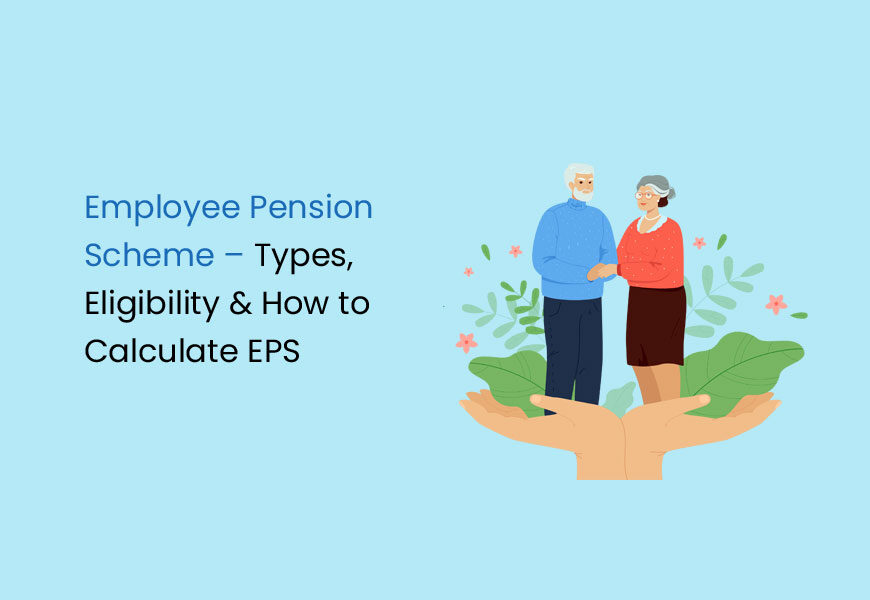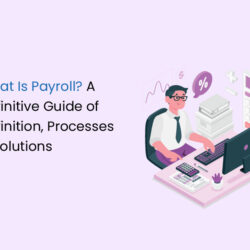The Employees’ Pension Scheme is an important social security scheme offered and administered by the Employees’ Provident Fund Organisation (EPFO). This scheme extends pension benefits to all members of the EPFO, enabling retirees to maintain their standard of living and extending a sense of financial security.
In this article, we delve deeper into the Employees’ Pension Scheme, its types, eligibility, coverage and how it is calculated. We will also cover the EPF higher pension scheme and how to obtain it.
Updates about EPFO Pension
Higher Minimum Pension for EPF Pensioners
The EPFO is considering increasing the minimum pension from ₹1000 to ₹2000 every month. This change will particularly benefit more than 60 lakh subscribers of the Employees’ Pension Scheme, 1995. As of now, over 40 lakh members receive a pension of less than ₹1500 each month. While this is great news for pensioners, it does mean an additional cost of ₹3000 crores for the government. Stay tuned for further updates on this positive development!
Private Sector Employees to Get Enhanced Pensions After Supreme Court Ruling
In a landmark decision, the Supreme Court has directed the EPFO to raise pensions for private sector employees significantly. Previously, there was a cap of ₹15,000 on the salary used to calculate pensions. However, with this cap removed, the EPFO will now calculate pensions based on 8.33% of the actual salary of the employee. While this means a substantial increase in pensions, it might lead to a decrease in the net EPF savings of the employee. The ruling aims to provide fair and proportionate pensions to private sector employees based on their complete salary.
What is the Employees’ Pension Scheme?
Introduced in 1995 and managed by the EPFO, the Employees’ Pension Scheme (EPS) 1995 is a pension scheme in India that provides financial security to employees covered under the EPF scheme. It assures employees a monthly pension after their retirement (at 58 years of age). The benefits of the scheme can be availed by both existing employees (when the scheme was announced in 1995) and new employees.
The Employees’ Pension Scheme also extends pensions to employees who were disabled or lost their life in service. Being a defined benefit scheme, the amount of pension that an employee will receive will depend on their length of service and average salary.
Eligibility
The eligibility criteria for the Employees’ Pension Scheme are as follows:
- The employee must be a registered EPFO member.
- The employee must have completed atleast 10 years in service. This does not have to be 10 continuous years of service.
- If the employee has completed more than 6 months but less than 10 years of service, they are allowed to withdraw their EPS amount in case of unemployment exceeding 2 months.
- The benefits of the scheme are available to both existing EPFO members when the scheme was launched in 1995 and new ones who joined afterwards.
- For regular pension payments to start, the employee must have reached 58 years of age.
- For early pensions, the employee must have reached the age of 50 years. However, the pension rate will be slashed by 4% per annum.
- Pension can also be deferred by 2 years until the age of 60. If employees opt for late pension (starting age 60), they are eligible for an additional 4% pension per year.
- If an employee is permanently disabled, they are eligible for monthly pensions for their lifetime, regardless of whether they have completed the pensionable service period. They would be required to undergo medical examination to be certified unfit for the work they were doing prior to the disablement.
- If an employee dies in service, their dependent family members (spouse, children and dependent parents) are eligible for monthly pensions. If the spouse remarries, they will not be eligible for monthly pensions under the Employees’ Pension Scheme. However, the children will be classified as orphans and will continue to receive monthly pensions.
- The threshold limit for eligibility to the EPF scheme is a monthly income (basic wage+ dearness allowances + retaining allowances) not exceeding Rs. 15000. Existing EPF members with higher salaries were eligible but contributions will be only for the first Rs. 15000.
Coverage
All members of the EPF scheme are automatically enrolled for the Employees’ Pension Scheme. So, the coverage is the same as EPF scheme. All establishments with 20 or more employees are mandated to offer EPF to all employees. In certain notified industries, establishments with less than 20 employees are also required to extend retirement, insurance and benefits through the EPF scheme.
Employers with less than 20 employees in other establishments may also offer EPF benefits voluntarily. However, those employing informal workers, especially households and small businesses, cannot extend EPF benefits. Not until, they are using the TankhaPay app.
The TankhaPay app enables all employers including individual households to extend EPF and other social security benefits comprehensively to all their informal workers. These informal workers could include domestic workers, nurses, peons, drivers, gig workers, delivery persons, temporary workers and so on.
Contributions
Under the EPF scheme, employees contribute 12% of their wages (basic wage+ dearness allowance + retaining allowance) while the employers contribute 13%. The entirety of the employee’s contribution goes towards the EPF scheme while the employer’s contribution is divided as follows:
- 8.33% towards the Employees’ Pension Scheme
- 3.67% towards EPF
- 0.5% towards Employees’ Deposit Linked Insurance or EDLI scheme
- 0.5% towards admin charges
Types of Pensions Under Employees’ Pension Scheme (EPS)
In addition to the regular superannuation pension under EPS, there are four other types of pensions offered. Superannuation pension is the monthly pension paid to employees upon their retirement at 58 years of age (with a minimum 10 years of service).
1. Widow Pension
The widow of a deceased employee is eligible for monthly pensions until their remarriage/ death. The eldest widow is paid the pension in case there is more than 1 widow.
2. Child Pension
Surviving children of the deceased EPFO member are eligible for monthly child pensions. Pensions are paid for upto 2 children until each of them reaches the age of 25. The amount paid is 25% of the widow pension.
3. Orphan Pension
If an employee dies in service and there is no surviving widow, two of their surviving children will be paid monthly orphan pensions. They are paid 75% of the value of the widow’s monthly pension until each of them reaches the age of 25.
4. Reduced Pension
If an EPFO member has completed 10 years of service and wants to withdraw an early pension upon reaching 50 years of age, they will receive what is called a reduced pension. For each year less than 58 years, 4% will be reduced from the amount payable.
For instance, if they decide to withdraw early pension at the age of 52, they are withdrawing 6 years before retirement. So, their reduced pension amount will be 76% (100% – 6 x 4) of the original pension amount.
How to Calculate Pension Under the Employees’ Pension Scheme?
The amount of pension paid under the Employees’ Pension Scheme depends on the pensionable service and pensionable salary.
Pensionable service is the actual length of service of the employee under all their employers (up until the age of 59 years). The employee is required to get their EPS certificate issued and submit to the new employer every time they switch jobs. If an employee completes 20 years of service, they become eligible for 2 years’ bonus.
Pensionable salary is the average monthly salary of the employee in the last 60 months of service before they retire/ exit employment. In case there are non-contributory periods in the last 60 months, they are not considered, and the employee will obtain the complete benefit. The maximum pensionable salary is Rs. 15000.
Employee’s Monthly Pension = (Pensionable Salary x Pensionable Service)/ 70
For instance, Rima has worked for 35 years, and their average salary for the past 60 months is Rs. 7700.
Rima’s monthly pension = (35 x 7700)/ 70 = Rs. 3850
Note: Since the maximum pensionable service is 35 years, Rima will not get the 2-year bonus for completing 20 years of service.
Benefits Provided Under the EPFO Pension Scheme
Eligible members of the Employee Provident Fund Organization (EPFO) can access various pension benefits based on different scenarios.
- Pension upon Retirement at 58 Years: Upon reaching the age of 58, members qualify for pension benefits after completing a minimum of 10 years of service. An EPS Scheme Certificate is issued, enabling the member to fill out Form 10D and receive monthly pension payments.
- Pension for Early Withdrawal before Age 58: If members cannot fulfil the 10-year service requirement before turning 58, they can opt for a lump sum withdrawal at 58 by submitting Form 10C. However, monthly pension benefits are not available in this case.
- Pension due to Total Disablement: Members who become totally and permanently disabled during their service period are entitled to a monthly pension, regardless of the years served. The employer must deposit funds in their EPS account for at least one month to qualify. Monthly payments commence immediately from the date of disablement, subject to a medical examination to assess job fitness.
- Pension for the Family in Case of Member’s Death: Pension benefits are extended to the member’s family under specific circumstances:
- If the member passes away during service, provided the employer deposited funds for at least one month.
- If the member completed 10 years of service and died before reaching 58 years of age.
- In the event of the member’s death after monthly pension payments have started.
These provisions ensure financial security for EPFO members and their families, offering different avenues to access pension benefits based on individual situations.
Checking Your EPS Amount
To determine the amount accumulated in your Employees’ Pension Scheme (EPS) account, access your EPF Passbook. In the passbook, the last column displays the monthly EPS contributions made by your employer. Download the passbook from the EPF Passbook portal after logging in using your UAN and password.
Importance of the Employee Pension Scheme
The Employee Pension Scheme (EPS) offered by the Employee Provident Fund Organization (EPFO) is designed to provide comprehensive financial support to employees and their families, ensuring a secure future. Here’s a detailed look at the wide-ranging benefits it offers:
Regular Retirement Income
EPS guarantees a stable monthly pension to employees upon retirement, offering financial stability during their post-employment years. This consistent income enables retirees to maintain their standard of living and meet their essential needs effortlessly.
Disability Pension
In the unfortunate event of total and permanent disability, EPS provides a lifelong pension. This vital benefit ensures individuals facing disabling conditions have a dependable income source, covering their expenses and medical requirements effectively.
Family Pension
EPS extends crucial support to the employee’s family. In case of the member’s demise, their spouse and dependent children receive a monthly pension. This provision ensures the family’s financial needs are met, even in the absence of the primary earner, fostering financial security for surviving family members.
Early Withdrawal Provisions
EPS offers flexibility in the form of early withdrawals under specific conditions, such as total disability or meeting predefined service criteria. This feature provides valuable financial assistance when needed, allowing members to access their pension funds in unforeseen circumstances.
Inflation Protection
The pension amount received under EPS is regularly adjusted to account for inflation. This crucial provision ensures that the purchasing power of the pension remains stable over time, enabling retirees to cope with rising living costs effectively.
Tax Benefits
Contributions made towards EPS qualify for tax benefits under the Income Tax Act. This incentivises employees to invest in their pension scheme, offering tax savings while securing their financial future. It encourages individuals to plan for their retirement efficiently.
Employer Contribution
Employers actively contribute to EPS, enhancing the pension fund and ensuring a more substantial corpus for employees’ retirement. This combined effort between employers and employees results in a robust pension fund, leading to enhanced post-retirement financial prospects.
These elements together make EPS a comprehensive and invaluable financial safety net, providing peace of mind to employees and their families throughout their lives. For further guidance and personalised information, individuals are encouraged to consult with EPFO representatives or refer to official guidelines.
Important EPF Pension Forms
To access benefits under the Employees’ Pension Scheme (EPS), either the EPFO member or their survivors must complete the following forms:
| EPS Form | Applicant | Purpose of the Form |
|---|---|---|
| Form 10C | Member |
|
| Form 10D | Member |
|
| Life Certificate | Pensioner/Guardian |
|
| Non-Remarriage Certificate | Widow/widower |
|
Challenges and Considerations of the EPFO Pension Scheme
A significant challenge faced by pensioners and applicants under the EPFO’s pension scheme is the lack of clarity regarding the amount they will receive after their applications are accepted. Many users encounter difficulties in calculating the payment amount and understanding the process of transferring wages from their EPF account to the EPS account. This lack of transparency creates confusion and frustration among users, highlighting a pressing issue that needs to be addressed within the pension system.
Important Points to Remember About EPFO Pension
- Employer Contributions: All contributions to the Employees’ Pension Scheme (EPS) account are made by the employer.
- Employer’s Share: Employers contribute 8.33% of the employee’s pay towards EPS. The employee’s pay includes basic wages, dearness allowance, retaining allowance, and the cash value of food concessions.
- Timely Contributions: Employers must deposit contributions within 15 days after the end of each month.
- Financial Responsibility: Employers bear all applicable contribution costs.
- Responsibility of Principal Employer: The principal employer is responsible for the contributions of all employees working directly or under a contractor.
- Minimum Service Period: To be eligible for pension benefits, a minimum service period of 10 years is required.
- Partial Withdrawal: If you have served between 6 months and 10 years but have been unemployed for over two months, you can withdraw the EPS amount.
- Retirement Age: The retirement age under this scheme is fixed at 58 years.
- Membership Cessation: An employee ceases to be a member of the Pension Fund upon reaching 58 years or when they start availing reduced pension (from age 50).
Ensuring understanding and transparency, these guidelines outline the essential aspects of the Employees’ Pension Scheme, providing clarity for both employees and employers.
What Is the EPF Higher Pension Scheme?
The EPF higher pension scheme enables employees to contribute 8.33% of their actual monthly salaries towards the Employees’ Pension Scheme, even if it exceeds the threshold limit of Rs. 15000 per month. If an employee opts for a higher pension, there will be a readjustment between EPF and EPS contributions by the employer. They will contribute 9.49% (8.33 +1.16) toward EPS and a reduced 2.51% towards the EPF scheme.
Higher Pension Contribution Under EPS
When the Employees’ Pension Scheme was announced in 1995, the maximum pensionable salary was fixed at Rs. 5000 which increased to Rs. 6500 later. In 1996, an additional clause was added, enabling employees to opt for higher pensions to be calculated on their actual salary instead of the threshold limit of Rs. 6500. This increases the pension amount sizeably for the employees. To opt for higher pension, the employee had to file the joint option form to the EPFO within 6 months.
In 2014, another amendment was introduced which increased the threshold limit for pensionable salary at Rs.15000. However, the provision for pension on higher salary amount was omitted. So, those joining the EPF scheme after 2014 would receive pension on a maximum of Rs.15000 even if they earned higher salaries.
Pre-existing EPFO members could continue to contribute 8.33% of their actual salary even if it exceeded the threshold amount. This was provided if they filed the new joint option with the EPFO within 6 months of the announcement.
However, many employees were unaware of the joint option for higher contributions after the 2014 amendment while the EPFO rejected joint options of several others. Another issue was that some employers were contributing 8.33% on actual salaries even when joint option wasn’t filed while taking the pensionable salary as Rs.15000. This led to a slew of court cases by employees seeking higher pensions.
EPF Higher Pension Eligibility
- Employees (both those in service on September 1, 2014 and those who retired before September 1, 2014) who had filed the joint option but rejected by the EPFO are eligible for 8.33% contribution on higher salary. They could obtain this benefit by filing the higher pension claim application.
- Employees (in service on September 1, 2014) and contributing above the threshold limit without exercising the joint option had to exercise the joint option to continue to do so.
- Employees who had retired before September 1, 2014 without filing the joint option are not eligible for higher pensions.
Applying for A Higher Pension In EPF
- Visit the EPFO Unified Members’ Portal.
- Click on Pension on Higher Salary: Online application for validation of Joint Option in the right side bottom of the page.
- Fill in all necessary details and submit the form.
- The EPFO will send the forms to respective employers for verification.
- Upon verification, field officers will examine the application and verify the salary details submitted.
- If there are no mismatches or errors, the dues will be calculated and order passed by RPFC-II/RPFC-I/APFC for the deposits to be transferred/ deposited.
EPF Higher Pension Option Form
All employees who are eligible for higher pensions (retired and in-service) can find the higher options form in the EPFO Unified Members’ Portal for online filing or do it offline by visiting a regional EPF office. The last date for filing the joint option form for higher pension is June 26, 2023.
EPFO Guidelines for Higher Pension
- Employees must give explicit consent in the joint option form agreeing to the EPF-EPS share re-adjustment.
- Employees must submit the following documents along with the higher pension application:
- Proof of verified joint option filed under para 26(6) of the EPF scheme and para 11(3) provision.
- Proof of EPF contribution remittance in their EPFO account exceeding the current wage limit (Rs. 5000 or Rs. 6500).
- Written refusal by the EPFO or APFC to higher pension remittance/ request.
EPF Higher Pension Calculation Formula
The formula is the same as the Employees’ Pension Scheme formula:
EPF Higher Monthly Pension = (Pensionable Salary x Pensionable Service)/ 70
The only difference is the actual 5-year salary average is taken instead of the threshold limit.
EPF Higher Pension Calculation
Jaspreet’s 60-month average salary is Rs.40,000 and she has completed 30 years in service. Since she has completed 20 years in service, her pensionable service will be 32 years.
If she hadn’t opted for the higher pension,
Jaspreet’s monthly pension = (Rs.15000 x 32)/ 70 = Rs. 6857.14
If she had applied for higher pension by exercising the joint option,
Jaspreet’s higher pension = (Rs.40000 x 32)/70 = Rs. 18, 285.71
Conclusion
The Employees’ Pension Scheme ensures a steady, reliable source of income for employees after their retirement. This will help them to maintain their standard of living and be financially independent. It also offers a safety net for family members and dependents in case of the death or permanent disablement of the employee.
Using the TankhaPay app, employers can ensure that all their informal employees find financial stability and independence after their retirement by extending the EPF and other comprehensive social security benefits.
FAQs about the Employee Pension Scheme
Which is better: EPF or pension?
Both EPF and EPS offer unique benefits. EPF provides a lump sum retirement benefit, whereas EPS ensures a lifelong income. Both schemes are valuable for employees, enabling them to create savings and secure their financial future.
When is an employee eligible to receive a pension?
Employees who joined the Employees' Pension Scheme, 1995, on or after November 16, 1995, are eligible for pension benefits. Additionally, those joining the EPF scheme from September 2014 onwards can join the EPS if their basic salary doesn't exceed Rs 15,000 per month.
Can I withdraw the full pension amount from EPFO?
Withdrawal of pension contributions is permitted under various conditions, including having less than 10 years of service or reaching 50 years of age with a decade of service. Upon reaching 58 years of age with 10 years of service, one becomes eligible for 100% monthly pension payouts.





















